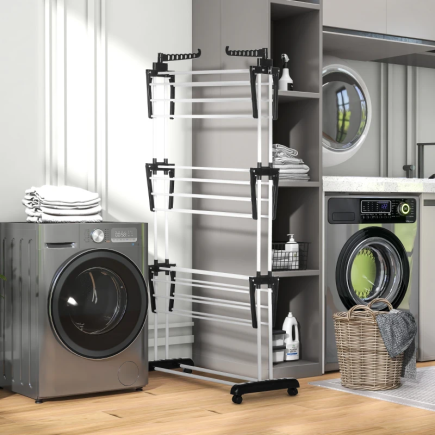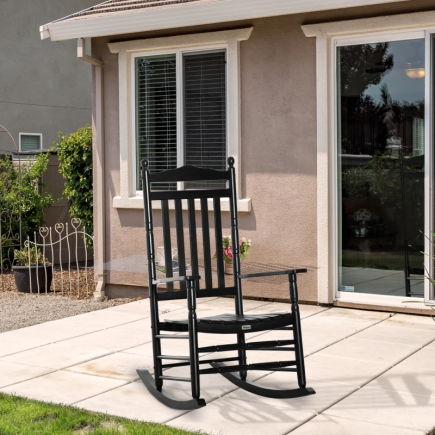Electric fireplaces are modern, efficient, and visually appealing but just like any appliance, they require occasional cleaning to keep them working properly and looking great. Whether you’re preparing for the colder months or just want to maintain your fireplace’s appearance, knowing how to clean it safely and effectively is essential.

In this article, you’ll find step-by-step instructions to clean every part of your electric fireplace, along with helpful maintenance tips to extend its life and ensure peak performance.
Safety First: Power Down and Cool Off
Before beginning any cleaning task, make sure your electric fireplace is completely safe to handle.
Step-by-step
- Turn off the fireplace using the remote or control panel.
- Unplug it from the wall outlet, if your fireplace is hardwired, turn off power from the circuit breaker.
- Allow the fireplace to cool down, wait at least 20–30 minutes to ensure all internal parts, especially the heater, have reached room temperature.
- Wear gloves if you plan to handle interior components or bulbs, to protect both your hands and the parts from oils or damage.
Never attempt to clean a powered-on or still-hot fireplace. Doing so could lead to electrical shock or injury.
What You’ll Need: Electric Fireplace Cleaning Supplies
Preparing the right tools before you begin will make the process smoother and safer.

Recommended Tools and Supplies
| Item | Use Case |
| Microfiber cloths | For wiping down surfaces without scratching |
| Soft-bristle brush | For loosening dust in hard-to-reach areas |
| Vacuum with brush attachment | To remove dust from vents, fans, or ember beds |
| Mild dish soap | Safe for wiping frames or stubborn stains |
| Distilled white vinegar | Mixed with water to clean glass without streaks |
| Spray bottle (optional) | To mist cleaner onto cloths (not directly on unit) |
| Lint-free towel | For drying surfaces to prevent water spots |
Avoid using ammonia, bleach, harsh solvents, or abrasive cleaning pads. These can permanently damage finishes and sensitive components.
Cleaning the Exterior Surfaces (Mantel, Frame, Finish)
Start with the outer structure of the fireplace, which is most exposed to dust, fingerprints, and environmental buildup.

Steps
- Dust the surface with a dry microfiber cloth to remove loose particles.
- For deeper cleaning, dampen a cloth with water and a few drops of dish soap. Wring it out thoroughly to avoid dripping water into electrical parts.
- Gently wipe the frame, base, and mantel. Focus on corners, seams, and areas around buttons or controls.
- Dry immediately with a clean towel to prevent moisture damage or streaking.
If your unit has wood accents, avoid soaking them moisture can warp natural or engineered wood finishes.
Cleaning the Glass Panel: Exterior and Interior
The front glass is what displays the simulated flames, so clarity is key for a realistic appearance.
Cleaning Steps
- Spray a small amount of vinegar-water solution onto a soft cloth. Avoid spraying directly on the glass.
- Wipe the exterior of the panel in circular motions to remove fingerprints, smudges, and dust.
If the inside of the glass also needs cleaning:
- Refer to your owner’s manual to safely remove the panel.
- Once removed, repeat the same cleaning process on the inside.
- Ensure the glass is completely dry before reinstalling it.
This is an important aesthetic step. Dirty or hazy glass makes even the best flame effects appear dull or foggy.
Dusting the Ember Bed, Logs, and Inserts
Electric fireplaces often feature artificial logs, stones, or glass beads that mimic burning wood or embers. These elements should be cleaned gently to maintain their appearance and functionality.

- Vacuum the ember bed area using a brush attachment to remove loose dust.
- Use a dry soft-bristled brush to gently sweep dust from the logs, rocks, or crystal inserts.
- Avoid moisture entirely on these components unless the manufacturer allows it.
Be gentle. These parts are often painted or coated for a realistic finish and can be scratched or discoloured if handled roughly.
How to Clean the Heater, Inlets, and Outlets
The heater’s performance relies on good airflow. Dust in the vents can restrict heat output and trigger automatic shutdowns.
- Locate the inlet and outlet vents. These are typically on the back, bottom, or top of the unit depending on the model.
- Vacuum both vents thoroughly using a soft brush attachment to prevent pushing dust further inside.
- Wipe surrounding areas with a microfiber cloth to clear remaining particles.
This small step significantly improves heating efficiency and reduces fire hazard risks.
Cleaning the Fan and Heating Coils (If Accessible)
If your electric fireplace has been making unusual noises or has reduced heating efficiency, the fan and coils may need attention.
How to Clean
- Remove the front grille or rear panel carefully (if permitted).
- Use a small, soft brush to dislodge dust on the fan blades.
- Vacuum loose dust carefully while holding fan blades still.
- Do not use water or wet cloths in this area under any circumstance.
If you’re unsure or uncomfortable accessing these parts, it’s best to hire a certified technician.
Maintaining the Flame Effects (LEDs, Mirrors, Screens)
The illusion of flame is created using LEDs or light sources reflected off rotating mirrors or projected onto a screen. Dust buildup here can distort the flame visuals.
Cleaning Tips
- Use a dry, fine-bristled brush to clean accessible mirrors or rods.
- Gently wipe LED covers or light enclosures with a dry microfiber cloth.
- Avoid liquid cleaners, moisture can damage light components and circuitry.
Be extra careful not to disturb wiring or moving parts while cleaning these flame-effect features.
Cleaning the Control Panel and Remote

Buttons, dials, and remotes are high-touch areas. They collect oils and dirt, which can interfere with operation.
- Wipe the control panel with a dry or lightly damp microfiber cloth.
- If needed, use a soft-bristle brush to remove debris from around buttons.
- Do not use spray cleaners on control panels or remotes.
- Clean the remote’s exterior with a damp cloth, then dry it immediately.
If your fireplace isn’t responding to commands, clean the panel first before assuming internal failure.
How Often Should You Clean an Electric Fireplace?
The frequency depends on your home’s environment, but a general schedule can help maintain peak performance.
Recommended Cleaning Schedule
| Component | Frequency |
| Exterior surfaces | Weekly or bi-weekly |
| Glass panel | Monthly |
| Ember bed and logs | Every 1–2 months |
| Heater vents | Monthly |
| Fan (if accessible) | Every 6 months |
| Flame visuals | Seasonally |
| Full internal inspection | Annually |
Easy Maintenance Adds Lasting Value
Keeping your electric fireplace clean isn’t just about appearances it’s about preserving performance, ensuring safety, and extending product lifespan. With just a bit of attention every few weeks, you’ll keep your unit looking sharp and functioning efficiently year after year.

Whether you already own a unit or are shopping for one, easy maintenance is a clear advantage. Electric Fireplaces offer warmth, visual comfort, and now with the right care a long life with minimal hassle.
FAQs
1. Can I use a steam cleaner on my electric fireplace?
No, steam cleaners introduce excessive moisture which can damage electrical components and finishes. Always stick to dry or lightly damp cloths.
2. Should I clean my electric fireplace if I haven’t used it in months?
Yes, even unused fireplaces can collect dust in vents and on visual components. A quick inspection and dusting before use is recommended.























